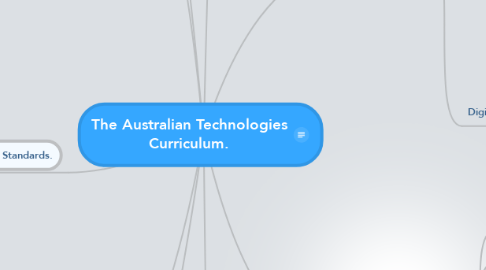The Australian Technologies Curriculum.
by Aimee Thompson


1. Band Levels
1.1. Foundation - Year 2 (60 hours)
1.2. Years 3 - 4 (80 hours)
1.3. Years 5 - 6 (120 hours)
1.4. Years 7 - 8 (160 hours)
1.5. Years 9 - 10 (80 hours)
1.6. Years 11 - 12 (200 - 240 hours)
2. Cross-Curriculum Priorities
2.1. Aboriginal and Torres Straight Islander histories and cultures.
2.2. Asia and Australia's engagement with Asia.
2.3. Sustainability.
2.4. English.
2.5. Mathematics.
2.6. Science.
2.7. History.
2.8. The Arts.
2.9. Health and Physical Education.
3. Achievement Standards.
3.1. Foundation - Year 2: Students identify and learn the purpose of familiar products, what they are used for and who uses them. They use different types of media and methods to investigate and communicate ideas.
3.2. Years 3 - 4: Students explain how products have been designed t meet the current and future needs and the properties and characteristics of technologies. They use a range of media and methods to investigate, communicate and design.
3.3. Years 5 - 6: Students identify how designed products, services and environments may involve competing considerations and trade-offs when sustainability and ethics are considered. They explain how the properties and characteristics of technologies, materials and systems impact designed solutions and influence design decisions for a range pf technologies contexts and how they contribute to daily life. They select and use appropriate digital technologies to collaborate on, investigate, generate, communicate and document design ideas and processes using technical terminology. Students develop project plans and production processes and procedures
4. Curriculum Aims & Objectives
4.1. Students will be able to use many different aspects of technology in a confident and creative manner.
4.2. Students will be able to evaluate technologies and choose the appropriate technologies for their needs.
4.3. Students will be able to make informed, ethical decision about technologies regarding their personal life, the environment and work.
4.4. Students will understand the history of technologies.
5. Key Ideas
5.1. The key idea is the students will develop skills and knowledge of how technologies work, their histories and who and when they should be used. Encouraging students to make ethical and moral decisions in context with technology and its impact of their lives and the world around them.
6. Subjects
6.1. Design & Technologies
6.1.1. Strands
6.1.1.1. Knowledge & Understanding
6.1.1.1.1. Key Concepts
6.1.1.2. Processes and Production Skills
6.1.1.2.1. Key Concepts
6.2. Digital Technologies
6.2.1. Strands
6.2.1.1. Knowledge & Understanding
6.2.1.1.1. Key Concepts
6.2.1.2. Processes & Production Skills
6.2.1.2.1. Key Concepts
7. Student Diversity.
7.1. Teachers take account of the range of their students current levels of learning, strengths, goals and interest to make adjustments.
7.1.1. English as an additional language.
7.1.2. Students with disability.
7.1.3. Gifted and talented students.
